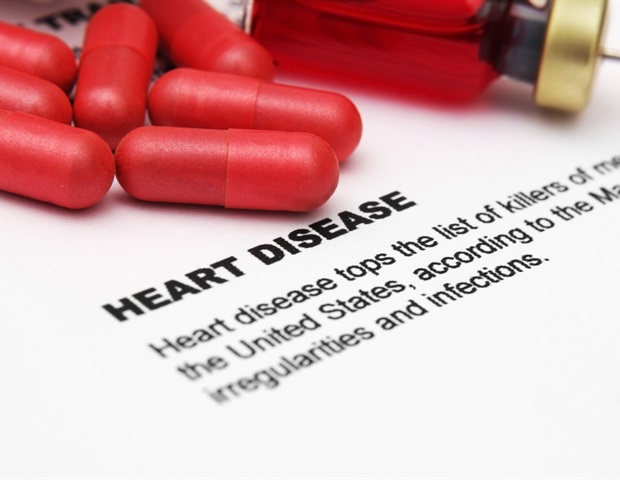New research from the Cleveland Clinic shows that eating foods containing erythritol, a popular artificial sweetener, increases the risk of cardiovascular events such as heart attack and stroke. Results from a new intervention study in healthy volunteers show that erythritol increases the activity of platelets (a type of blood cell), which may increase the risk of blood clots. Sugar (glucose) did not have this effect.
Published in Arteriosclerosis, thrombosis and vascular biologyThe research is further evidence that erythritol may not be as safe as it is currently considered by food regulators and that it should be re-evaluated as an ingredient. The study was conducted by a team of researchers at the Cleveland Clinic as part of a series of investigations into the physiological effects of common sugar substitutes.
“Many professional societies and clinicians routinely recommend that people at high cardiovascular risk — those with obesity, diabetes or metabolic syndrome — consume foods that contain sugar substitutes instead of sugar,” said lead and corresponding author Stanley Hazen, MD, Ph.D., chief of the Division of Cardiovascular and Metabolic Sciences at the Cleveland Clinic Lerner Research Institute and co-section chief of Preventive Cardiology. “These findings underscore the importance of further long-term clinical trials to assess the cardiovascular safety of erythritol and other sugar substitutes.”
Erythritol and other artificial sweeteners are common substitutes for table sugar in low-calorie, low-carb, and “keto” products. Erythritol is about 70% as sweet as sugar and is made by fermenting corn. Once ingested, erythritol is poorly metabolized by the body. Instead, it enters the bloodstream and leaves the body primarily through urine. The human body naturally produces small amounts of erythritol, so any extra consumption can build up.
Erythritol is classified as a GRAS (“generally recognized as safe”) ingredient by the U.S. Food and Drug Administration and the European Food Safety Authority, allowing its use in foods without restrictions. This is mainly because it is a sugar alcohol that occurs naturally in fruits and vegetables and is a byproduct of glucose metabolism in human tissues, albeit in small amounts.
However, recent studies by Dr. Hazen’s research group have found evidence that erythritol in commonly consumed amounts can increase cardiovascular risk.
The current research builds on the team’s previous study, published last year in Natural medicinee, which found that heart patients with high erythritol levels were twice as likely to have a serious cardiac event over the following three years as those with low levels. The study also found that adding erythritol to patients’ blood or platelets increased blood clotting. These results were confirmed by preclinical studies.
The new human intervention study was designed to more directly observe the effects on platelets after ingesting erythritol at a dose typically found in a “sugar-free” soda or muffin. In 20 healthy volunteers, researchers found that average post-meal erythritol levels in the group consuming erythritol increased more than 1,000-fold compared to their baseline levels. The results also showed that participants had a significant increase in blood clot formation after consuming erythritol, while no change was seen after consuming glucose.
This research raises concerns that a standard serving of a food or beverage sweetened with erythritol may acutely induce a direct clot-forming effect. Erythritol and other sugar alcohols commonly used as sugar substitutes should be evaluated for potential long-term health effects, particularly if such effects are not seen with glucose itself.”
WH Wilson Tang, MD, Co-author of the study, Director of Research for Heart Failure and Heart Transplant Medicine at the Cleveland Clinic
He adds that the results of this study are particularly notable because they come shortly after another recent study by this research group that showed that xylitol, another common artificial sweetener, caused similar increases in plasma levels in healthy subjects and affected platelet aggregation in the same way. As with erythritol, the studies of xylitol included large-scale observational studies that showed that high xylitol levels are associated with an increased risk of heart attack, stroke or death over the following three years.
The authors point out that further clinical studies are needed to evaluate the long-term cardiovascular safety of erythritol.
“I believe that it is better to indulge in sugar-sweetened treats occasionally and in small amounts than to consume beverages and foods sweetened with these sugar alcohols, especially for people at increased risk of thrombosis, such as those with heart disease, diabetes or metabolic syndrome,” advises Dr. Hazen. “Cardiovascular disease develops over time and heart disease is the leading cause of death worldwide. We need to make sure that the foods we eat are not hidden contributors.”
The research is part of Dr. Hazen’s ongoing investigation into factors that contribute to residual cardiovascular risk. His team follows patients over time and finds chemical signatures in the blood that can predict future development of heart and metabolic disease. He has made groundbreaking discoveries in the study of atherosclerosis and inflammatory disease, including the breakthrough discovery linking microbial pathways in the gut to cardiovascular and metabolic disease.
Dr. Hazen also directs the Center for Microbiome and Human Health at the Cleveland Clinic and holds the Jan Bleeksma Chair in Vascular Cell Biology and Atherosclerosis.
The study was supported in part by the National Institutes of Health and the Office of Dietary Supplements.
Source:
Journal reference:
WitkowskiM., et al. (2024). Ingestion of the non-nutritive sweetener erythritol, but not glucose, increases platelet reactivity and thrombotic potential in healthy subjects. Arteriosclerosis Thrombosis and Vascular Biology. doi.org/10.1161/ATVBAHA.124.321019.

